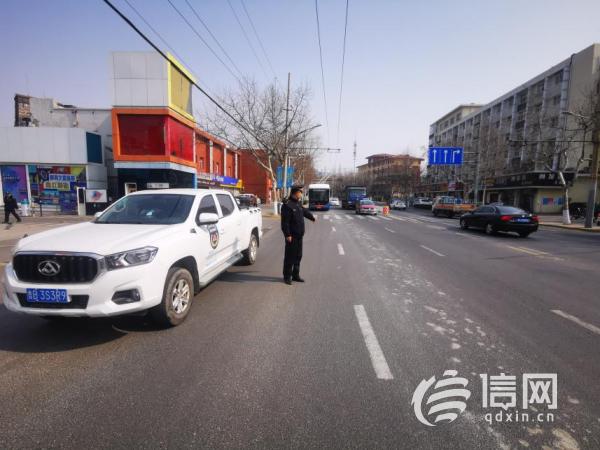CUHK Hospital carried out ultra -low -doses of lipciferous monoclonal cure for immune blister disease
Author:Southeast University Affiliate Time:2022.07.15
Ms. Wang, 53, accidentally suffered from blisters half a year ago. After treating no results in local hospitals, her family took her to the dermatology department of the Southeast University Affiliated Hospital. After a period of careful diagnosis and care after a period of careful diagnosis and care, Ms. Wang's body was able to recover and was discharged smoothly. But no one expected that after just one and a half months, Ms. Wang's condition recurred again. At this time, traditional hormones, immune preparations, immunoglobulin and other therapies could no longer control her condition. After fully evaluating the patient's condition and obtaining the consent of her family members, Director Wang Fei team injected Ms. Wang with a 100mg ultra -low -dose Lifenab biological agent after the family members' consent. Fortunately, three weeks later, Ms. Wang's condition was relieved. Subsequently, Ms. Wang accepted the injecting of a low -dose biological agent with a low -dose of 500 mg of pins. Recently, Ms. Wang finally recovered to discharge. Director Wang Fei, the dermatology department of CUHK Hospital, clinically explored the use of ultra -low doses of biological agents to treat immune blister disease. While ensuring the treatment effect, it also reduced the economic burden of patients to seek medical treatment.

Director Wang Fei (third from left) led the team to check.
According to Director Wang Fei, in October last year, Ms. Wang suddenly appeared erythema and blisters, and accompanied by itching symptoms. Ms. Wang did not take it seriously at first. Unexpectedly, in December, the number of blisters on her body gradually increased, and there were symptoms of fever. So the family took her to the local hospital for a clinic, and was diagnosed with "Bluscular Skybrase" after biopsy. After two or three days of drug treatment, Ms. Wang's fever was finally controlled, but there were still many new blisters, which were unbearable for a while. The local doctor suggested that Ms. Wang transferred to the hospital for treatment.
So, accompanied by her family, Ms. Wang came to the dermatology department of the University of CUHK. After questioning the medical history, it was found that Ms. Wang suffered from rheumatoid arthritis for more than 20 years, and had a history of "tuberculosis" 30 years ago. The team of Director Wang Fei carefully analyzed Ms. Wang's condition, and finally formulated a set of personalized treatment solutions. On the one hand, considering the patient's history of arthritis, on the other hand, it is also necessary to consider the current condition of the patient. Therefore, the team of Director Wang Fei decided to take the drug ulcers and a large number of new blisters in time for the patients' skin ulcers and a large number of new blisters while taking the patients. Condented therapy. However, after more than ten days, Ms. Wang's condition still did not improve, and there were more than 20 new blisters every day, which was also unbearable. Even so, in order to ensure the patient's life signs and quality of life, Director Wang Fei's team did not give up the original treatment plan, but used immunosuppressive agent cyclophenamide. After several cyclopensions treatment, the patient was discharged from the hospital.
However, after just two months, Ms. Wang's condition recurred again. After the treatment of twice cycloidamide, although Ms. Wang's condition was relieved, it was always good and bad. Faced with such a tricky condition, the team of Director Wang Fei, the dermatology department of CUHK Hospital, finally chose the Licien Mibidic biological preparation for treatment. The conventional amount of this biological agent is 1,000 mg each time, and the standard treatment plan is 1000 mg*2 times or 500 mg*4 times. Considering the physical condition of the patient, Director Wang Fei decided to use the 100 mg of Lifen Mibidic biological preparations for Ms. Wang first, and no one had used such a low -dose of Lifen Mibetry before.
However, unexpectedly, after a few days of use, the B cells in Ms. Wang gradually decreased, and in the next month, the number of B cells in Ms. Wang remained in a stable state. At the same time, Ms. Wang did not have new blisters, and her skin was gradually returning to normal. One month after the first use of Lichell monoclonal anti -resistance, Ms. Wang accepted the second biological injection. This time the Rician monoclonal anti -dose was 500 mg. In the following month, Ms. Wang finally lived like ordinary people.
This time, the successful attempt of Director Wang Fei's team using ultra -low -dose Ricci monoclonal monoclonal anti -anti -anti -anti -therapy has reduced the economic burden of patients to seek medical treatment under the condition of ensuring the treatment effect. Compared with traditional immunomyrosis treatment methods, the use of biological preparations can be controlled by refractory blister disease, while reducing the amount of hormone accumulation and reducing the side effects of hormones.
Director Wang Fei said that as of now, the dermatology department of CUHK Hospital has helped more than a dozen immunomyal patients to get rid of the pain and restore health by using the treatment of Lichell Mipida biological agents. Patients with blisters explore a suitable and effective treatment of new ways. (Zhang Xin Cheng Shouqin)
- END -
Changde: The police arrested the people's stray dog residents and praised

Thank you, this stray dog has finally been caught, and the children in the com...
The "Hundred Days Battle" cities and order of the city's northern district for all -weather inspections

Shibei District has continued to promote refined urban management and carefully bu...